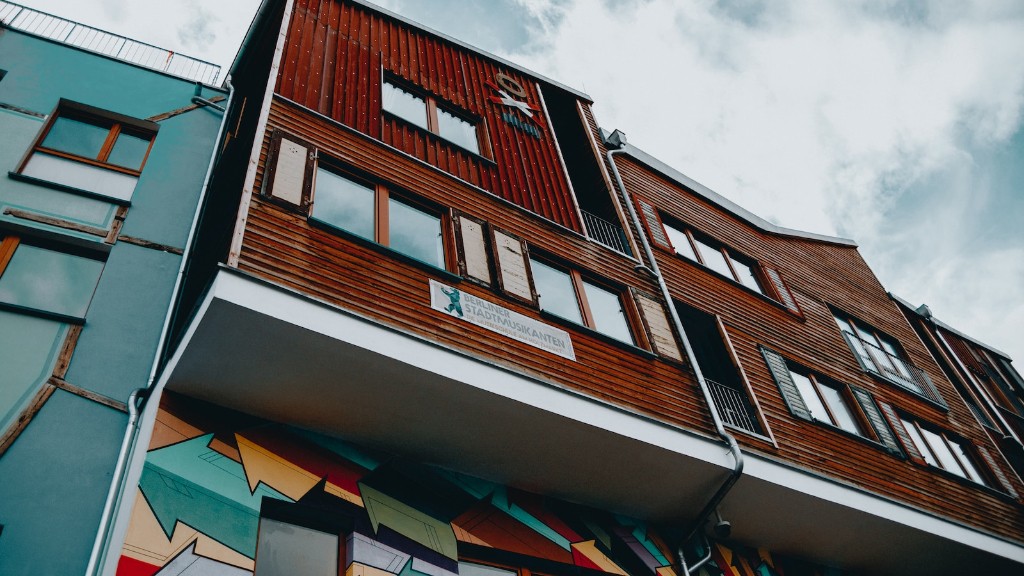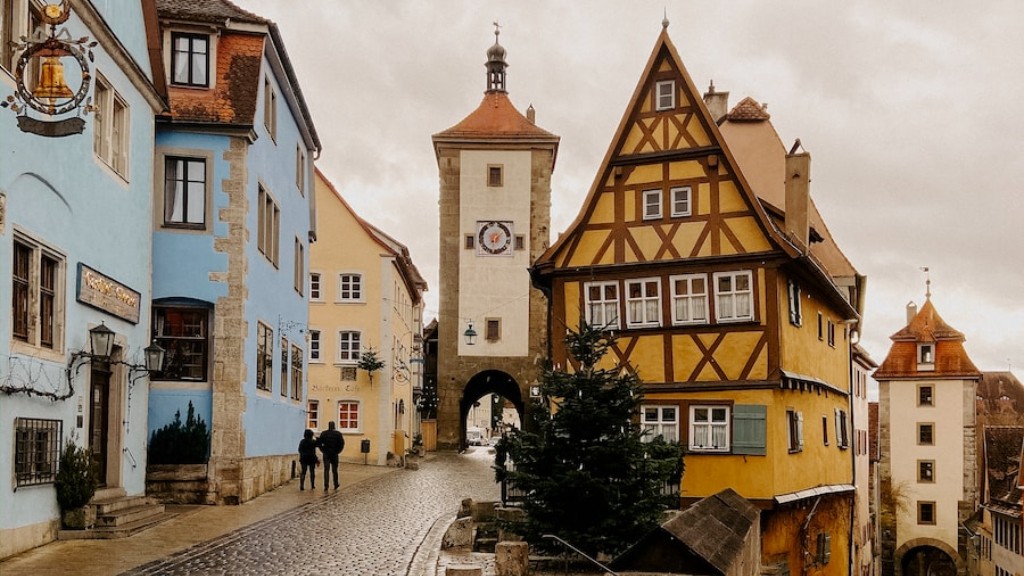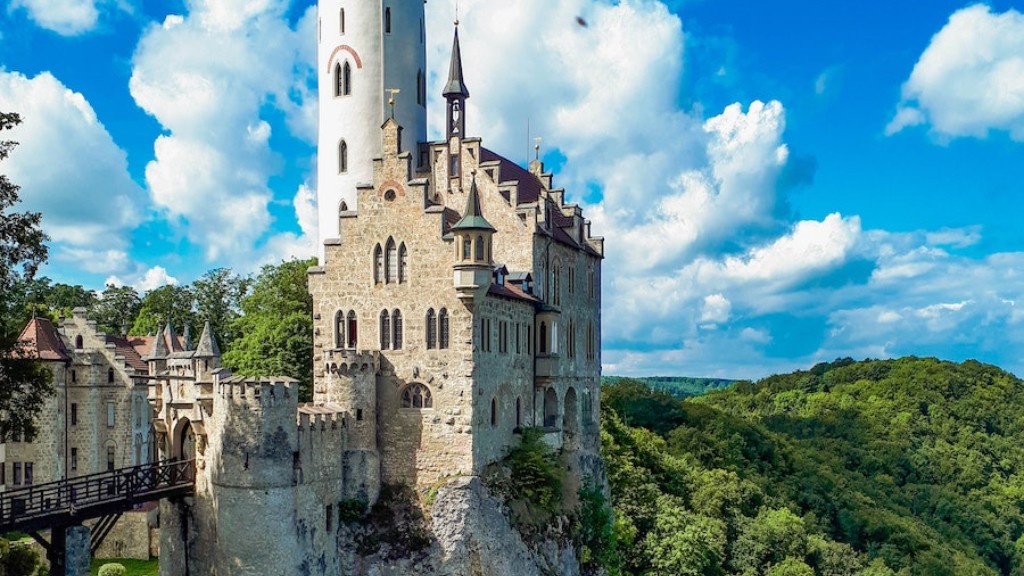Division of Germany After World War II
Germany was divided into four occupation zones after World War II. The Allies (US, Britain, France, the Soviet Union) had carved out the zones in order to govern and rebuild Germany following Germany’s defeat in the war. Berlin, the former German capital located in the center of the country, was also divided in a similar four-way pattern.
In June 1945, the leaders of the Allied powers met in the Berlin suburbs to make a final agreement on the disposition of Germany. At the Potsdam Conference, they proposed that Germany be split into four occupation zones. The Soviet Union (U.S.S.R) would receive the eastern half of Germany, which stretched from the Oder-Neisse line in the east to theGerman-Czechoslovakia border in the south. The non-Soviet Allies would receive three occupation zones in the west: France in the southwest, Britain in the northwest, and the United States in the south.
The Allies planned to create a democratic government in West Germany and also rehabilitate the economy by providing financial assistance, called the Marshall Plan. West Berlin, meanwhile, remained under Allied governance and was supplied with goods from the western zones. It was a symbol of the West’s commitment to democracy and free market capitalism in contrast to the authoritarianism and central planning of the Soviet Union.
The Soviet Union, however, had other plans. They continued to tighten their control of East Germany, banning independent political organizations, suppressing public dissent, and maintaining a sizable military presence in the area. The irredentist policies of Stalin were fueled by his desire to dominate the region’s economy and exert influence in the political arena. In response to these developments, the West established the Federal Republic of Germany in 1949 and the German Democratic Republic in the Soviet zone.
In 1961, the German Democratic Republic enacted the Berlin Wall in order to prevent its citizens from migrating to the West. This symbolically cut off East Germany from West German political and economic influence. Despite its stated purpose, it also served as a symbol of East Germany’s isolation from the world and their subjugation to the Soviet Union.
Tension between East and West Germany finally ended with reunification in 1990. After the collapse of the Soviet Union, the nations of the former Warsaw Pact all agreed to peacefully reunify Germany. East and West Germany were officially reunited on October 3rd, 1990. The Berlin Wall was torn down shortly afterwards.
The Impact of Divisions on People
The division of Germany profoundly impacted the lives of millions of people. During the first decade after the division, many Berliners were unable to access medical care, goods and services from either side. This situation was made worse by the fact that East Germany had enacted harsh restrictions on travel between East Germany and West Germany, making it extremely difficult, if not impossible, for many East Berliners to contact their families in West Germany. This situation had a devastating impact on many families and resulted in permanent separation of family members.
Furthermore, West Berliners were effectively cut off from East Germany, which had always been an important part of Berlin’s cultural identity. This meant that West Berliners were isolated from their cultural heritage and unable to take part in cultural and economic activities in East Germany, including the arts, trade, and tourism. Cultural events such as East Berlin’s Tempelhof Air Show, which had been a popular attraction for generations, were now inaccessible to West Berliners for the duration of the time.
Additionally, East Germans were cut off from the commercial opportunities offered by West German businesses. East Germany’s isolation from world markets and its inability to access advanced technology hampered industrial growth and severely limited economic opportunities. As a result, many East Germans were deprived of the economic and educational opportunities available in West Germany, which in turn perpetuated their status as second-class citizens within the country.
Reunification and German-Polish Relations
With the fall of the Berlin Wall and the reunification of Germany in 1990, the country was once again unified on its own accord. This process of reunification was far from perfect, however, as the transition from two distinct Germanies to one was fraught with difficulties. The economic gap between East and West Germany was particularly pronounced and it took many years of hard work and significant economic investment before the entire country was on par with the western part. Additionally, political resistance to reunification from the nationalist right posed a serious obstacle.
Furthermore, the reunification process had a major impact on Germany’s relationship with its neighbors, especially Poland. The Oder-Neisse line had been established as a permanent border between Germany and Poland in 1945 and had been a source of contention between the two countries for decades. With German reunification, the possibilities of a new German-Polish border arrangement were explored, but ultimately, only minor adjustments to the existing border were made. This largely reflects Germany’s desire to maintain good relations with its eastern neighbor.
The European Union and German Relations
German reunification opened the door for the country to take a leading role in the emerging European Union. With access to the larger market of Europe, German companies were able to expand, grow, and compete with more successful European companies. Additionally, the German reunification process put into motion a series of reforms that made Germany more attractive to outside investment and businesses. This allowed Germany to become an international economic power after reunification.
The economic opportunities offered by European Union membership and the collective security offered by its members have contributed greatly to Germany’s post-unification success. The stability offered by the EU has enabled Germany to pursue successful foreign policy objectives, such as forming a strong trade relationship with Russia and lowering tensions with its neighbors.
Redefining German National Identity
With the reintegration of East and West Germany in 1990, the unified Germany was faced with the challenge of defining a new national identity. Decades of separation had resulted in the formation of two distinct Germanies. The challenge for the unified Germany was to combine the two, while not erasing their individual identities. This posed a considerable challenge, as both sides had their own cultural and political traditions.
The unified Germany was able to reach a compromise between the two sides by promoting German patriotism and forming strong links to the European Union. The unified Germany had come to embrace its unique cultural heritage and forged a new sense of national identity that embraced both the East and West. With this in mind, Germany was able to proudly proclaim itself a united, democratic nation.
Global Activities & Partnership
Since reunification, Germany has become one of the most internationally engaged nations in the world. In addition to playing a key role in the European Union, Germany also works closely with the United Nations, NATO, and the International Monetary Fund. Germany is a strong advocate for human rights and actively opposes human rights abuses around the world. Additionally, Germany works closely with other nations on global initiatives such as reducing greenhouse gas emissions, combatting terrorism, and promoting free trade.
In addition to its international activities, Germany has also entered into cooperation agreements with many of its European neighbors, including France, the Netherlands, and Poland. Germany is keen to foster a strong relationship with its neighbors and promote the European ideal of peaceful coexistence, mutual understanding, and the sharing of resources.
Germany is an important partner in diplomatic initiatives around the world and is actively involved in global efforts to promote peace and security. This includes providing training and resources for UN peacekeeping forces, participating in international efforts to reduce nuclear proliferation, and supporting economic development in developing nations.
Legacy of World War II
The divisions in Germany following World War II had a profound effect on the country and the continent as a whole. It not only marked the end of Germany’s aggressive ambitions, but also resulted in the transformation of the German people and their nation. The division of Germany forced Germans to confront the legacy of the war and to reconsider their identity and purpose in a drastically changed world order.
The reunification of Germany in 1990 provided the opportunity to renew relationships between the East and West, while embracing their own culture and heritage. This has resulted in Germany becoming a prosperous and influential nation, especially in Europe. It has also enabled Germans to come to terms with the legacy of World War II and to contribute to a more peaceful world.
Responsibility & Leadership
Since reunification, Germany has taken on a leadership role in the European Union and international organizations. This has included taking a more active role in resolving global conflicts and providing assistance for those in need. Germany has come to acknowledge its responsibility towards international peace and has sought to promote a stable global order through these activities.
Germany has recognized the need for strong international institutions to combat global poverty, promote human rights, and protect our environment. They have actively supported these efforts in a number of ways, including providing development aid, participating in UN missions, and engaging in dialogue with non-governmental organizations.
Germany’s leadership role has also been reflected in its foreign policy. Germany has been willing to take bold stands on difficult international issues and has sought to promote a more just global order by speaking out against human rights abuses, promoting peaceful conflict resolution, and standing in solidarity with oppressed communities.
Political & Social Development
Since reunification, Germany has seen a number of significant political and social developments. The introduction of a more proportional electoral system in 1990 has enabled new political parties to gain a foothold in German politics and the election of the first Green Party member to the Bundestag in 1994 was a notable milestone. Additionally, the reunification process has seen a number of reforms to Germany’s social policies, including the introduction of the minimum wage, increased maternity





